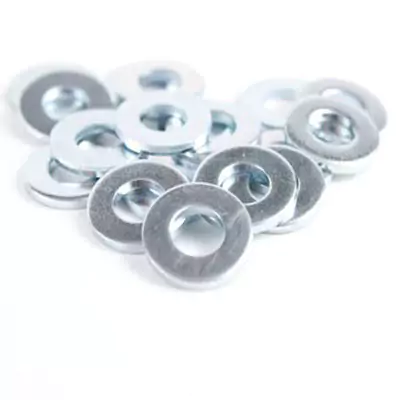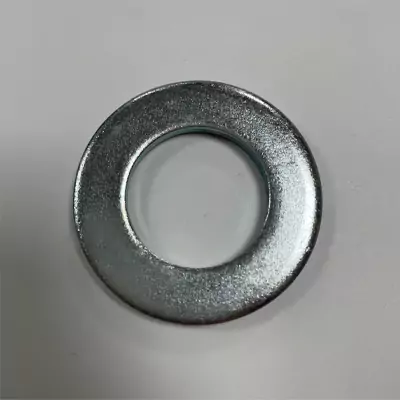caTEGORIES
Tags
Flat Washers and Load Distribution: Key Insights for Engineers

Posted: March 06, 2025
Categories: News
Tags: news
Washers are widely used in engineering applications as load-distributing or spacing components. They break a bunch of threaded fasteners, distributing the load, protecting them from damage, and preventing loosening from vibration. Load distribution is calculated from washer dimensions, material properties, and applied loads.
Load Distribution with Flat Washers
The Role of Flat Washers in Engineering
Flat washers are some of the more essential elements found in many engineering applications. It has multiple functionalities such as a spacer, load distributor and wear pad. Such simple but highly functional devices are essential to enable mechanical assemblies to work longer and stable.
Functions of Flat Washers
The flat washer was mainly intended to distribute the load of the threaded fastener (bolt, screw). This way it relieves the fastening surface from damage and decreases the loosening and vibrations. In addition, the flat washer can work as a spacer, keeping the right distance between components.
Importance in Load Distribution
Flat washers are by far the most critical to distributing the load. They allow for the distribution of the clamping force over a larger area, leading to lower stress concentration on the material surface. This is especially important in applications with softer materials that can deform at concentrated loads.
Calculating Load Distribution with Flat Washers
Understanding how to calculate load distribution when using flat washers is essential for engineers aiming to design robust mechanical systems.
Factors Affecting Load Distribution
Using flat washers, several factors affect the load distribution. Among these are the material properties of the washer and the bolted parts, the washer size and thickness, and the clamping force applied. Performance may also depend on environmental conditions like temperature and humidity.
Mathematical Models and Formulas
Mathematical models to simulate load distribution in bolted assemblies are utilized by the engineers. Hence, these models consider the variables like dimensions of the washers, properties of the material and forces applied. Formulas derived from these allow for accurate calculations in multiple aspects to ensure the assembly performs and is safe.
Material Considerations for Flat Washers
The choice of material for flat washers significantly impacts their effectiveness in load distribution.
Impact of Material Choice on Load Distribution
Different materials provide different performance in strength, corrosion resistance and thermal stability. The right material will ensure a washer remains structurally sound with consistent load transfer for many years.
Common Materials Used in Washer Manufacturing
Flat washers are manufactured from a range of materials, each offering unique benefits suited to specific applications.
Steel and Stainless Steel Washers
Steel washers are recognized for their robustness and lasting quality which makes them ideal for heavy-duty usage scenarios. The stainless steel varieties offer protection against corrosion which is particularly beneficial in settings susceptible to moisture or chemical exposure.
Non-Metallic Washer Options
Non-metallic washers, like nylon or rubber washers, provide features like electrical insulation and lower weight. These materials are frequently utilized in applications that need to avoid contact with metal or require flexibility.
Design and Application of Flat Washers in Engineering Projects
Designing flat washers involves considering several factors to ensure they meet specific project requirements effectively.
Application Techniques for Optimal Performance
To achieve optimal performance with flat washers, proper application techniques must be followed. This includes selecting appropriate sizes and materials based on load requirements and environmental conditions.
Design Principles for Effective Washer Use
Effective design principles ensure that flat washers perform their intended functions without failure.
Dimensions and Tolerances
Accurate dimensions and tolerances are crucial when designing flat washers. Ensuring that they fit precisely within an assembly prevents issues such as misalignment or uneven load distribution.
Surface Finish and Treatment
Surface finish treatments like zinc plating can enhance corrosion resistance while maintaining mechanical properties. Such treatments are particularly important in harsh environments where exposure to corrosive elements is common.
To acquire in-depth information regarding premium quality fasteners, including flat round washers that comply with DIN 125A with good hardness and corrosion resistance, finishing available in zinc plated or zinc flake coating, check out QEWIT‘s list today!
Innovations and Advances in Washer Technology
QEWIT’s Contributions to Washer Technology
Washer technology has journeyed far and wide in the fastener and fixings environment. QEWIT, with its foundation of producing high-quality industrial consumable products and international certificates, is one of the strong players in these innovations. Founded in 2004, QEWIT has been constantly focusing on the production and trade of a high-quality and uniform range of products. They still can help you with bespoke solutions that other standard washers are not able to repair.
Recent Developments in Washer Design
Enhanced Load-Bearing Capabilities
New designs in washers are being developed to simply hold a load. It includes optimizing the shapes and materials used in washer construction so that they can handle greater loads without failing structurally. Flat washers serve a fundamental feature of load distribution — to the point that we cannot underestimate. This effectively distributes the clamping force across a wider area, alleviating stress concentration on the material surface.
Corrosion Resistance Improvements
One primary aspect of washer performance is the corrosive resistance. This will play a large role in how the washer operates, as not all washers are effective at withstanding harsh environments. There have been developments in surface treatment techniques, which have brought about better corrosion resistance. Treatment types such as zinc plating can improve corrosion resistance while still leaving the mechanical properties intact. These types of treatments are critical in extreme environments where exposure to corrosive elements is common.
Best Practices for Engineers Using Flat Washers
Ensuring Proper Installation
Flat wash converters must be properly installed to function as intended. Washers need to be placed correctly within an assembly so that they distribute the loads evenly and do not loosen due to vibrations. The main purpose of flat washers is to distribute the load of a threaded fastener, such as a bolt or screw. This prevents harm to the surface they are fastening and also reduces the possibility of loosening since caused by vibrations.
Maintenance and Inspection Guidelines
Even in engineering applications, flat washers undergo regular maintenance and inspection, which need to be easily understood for their long-term effectiveness. Engineers must inspect for wear and corrosion that can affect performance regularly. Following manufacturer replacement intervals can also prevent failures and system integrity loss.
If you’re an engineer searching for a solution to your needs, in this area of expertise, consider checking out the flat washers manufactured by QEWIT company. Their washers are designed with features that ensure superior load distribution and come with top-notch corrosion resistance finishes like zinc flake coating. By combining these methods with the latest advancements from top manufacturers, engineers can enhance their designs to improve performance and longevity for different uses.



